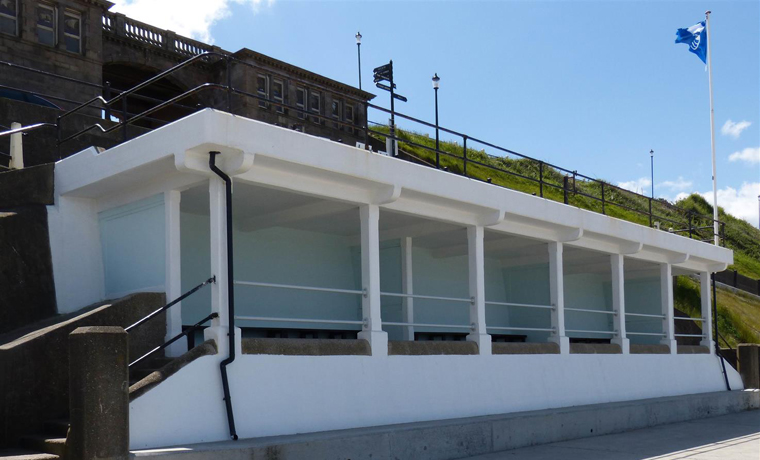
Flexcrete products have been used for the chloride protection and anti-carbonation protection of a series of concrete shelters located on the seafront of Sheringham, a seaside town on the north Norfolk coast.
The promenade over the sea wall features the concrete shelters, the oldest of which dates back to the Victorian era. As the shelters are located in a prominent position on the exposed North Sea front, they have been subjected to sustained chloride attack over the years. A tidal surge hit several towns on the eastern coast in December 2013, of which Sheringham was one of the towns to be affected. The tidal surge not only destroyed large sections of the sea wall and promenade but also highlighted the deteriorating state of the shelters.
North Norfolk District Council required a durable and long-term solution for the shelters to match the civil engineering works to the sea wall, so Flexcrete recommended concrete repairs to the pan European concrete repair standard EN 1504. The specification included a selection of Flexcrete’s water-based products, namely Steel Reinforcement Protector 841, Monomix waterproof concrete repair mortar, Monolevel FC fairing coat and Monodex Smooth, a high build, decorative anti-carbonation coating which allows damp concrete structures to breathe and is designed to last at least 15 years before first maintenance. Monodex Smooth is available in a range of aesthetic colours, of which white was chosen for the exterior of the concrete shelters, the result of which was a light, bright appearance. To reflect the seaside nature of the site, blue was chosen for the interior of the shelters.
The waterborne nature of Flexcrete’s materials was critical for this project, as they cure without releasing hazardous solvents or strong odour and there was absolutely no danger to the public during application. Flexcrete products were applied by specialist contractor Prestec UK.
Due to localised high chloride levels, sacrificial anodes were also incorporated in the design. The works were completed during the winter to ensure the shelters were ready to welcome the summer visitors.

